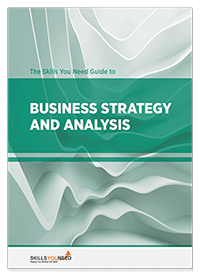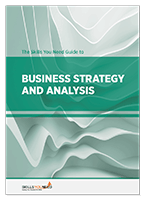Value Chain Analysis
See also: PESTLE AnalysisValue chain analysis is based on an idea originally developed by Michael Porter (of Porter’s Five Forces fame).
Porter suggested that organisations needed to look at the way in which they created value for their customers. In other words, they should look at what they did with their ‘inputs’ to produce ‘outputs’ that their customers wanted.
By breaking down their activities, both directly customer-facing and support activities, into a ‘value chain’, companies can focus their attention on creating maximum value for customers. This, in turn, gives them an advantage over their competitors.
Porter’s Value Chain
Porter described two types of activities that happen in companies:
Primary activities, which are customer-facing, and create direct value for customers.
They include inbound logistics (getting the inputs for the company), operations (activity within the company to convert inputs to outputs), outbound logistics (how you get the product or service to the market), marketing and sales (persuading customers to buy), and post-sales services (providing support for customers after they have bought, such as maintenance, or additional services).
Support activities, such as human resource management, IT, and infrastructure.
These activities are necessary for the successful running of primary activities, but do not directly provide value to the organisation’s customers. They may, however, have their own internal customers, and can therefore use value chain analysis to decide how best to serve those customers.
Porter suggested that it was helpful for companies to identify the elements that contribute to each of these sets of activities, and look at how they contributed to creating overall value for customers.
Importantly, by adding more value, companies can make themselves more attractive to customers, and therefore compete more successfully.
Using the Value Chain to Analyse Activity
There are three steps needed to use the value chain to analyse company activity.
1. Identify the processes and more detailed activities that together make up the primary and support activities
Porter described three different types of sub-activity in both primary and support activities:
Direct activities, which create value themselves, such as advertising, or running the factory that makes the company’s goods;
Indirect activities, which do not directly add value for customers, but instead do so by ensuring that direct activities run smoothly. Management is a classic example of an indirect activity; and
Quality assurance activities, which check that both direct and indirect activities are working effectively and to the required standards, thus ensuring value for customers. These would include things like quality checks on products, reviewing customer service phone calls, or management audits.
All these activities add value for the organisation. In value chain analysis, it is important to identify the full range of sub-activities across all primary and support activities.
WARNING! Status of activities is not fixed
The classification into direct, indirect and quality assurance activities will depend on the customer. It is therefore important to identify the customer before starting, to avoid any confusion.
2. Find the links between the sub-activities
The next step is to look at all the activities, and identify the links between them. In other words, ask yourself:
- Which of these activities contributes to others, or is affected by others?
- Which activities are affected?
- How are they affected?
You will need to look across the categories, as some direct activities will affect others, as well as support activities affecting direct activities.
Unnecessary activities
Depending on the nature of your business or organisation, you may find that you identify some activities that are not linked to anything else. You may therefore question whether they are adding value.
Be very careful before you stop doing them.
It is, of course, possible that they are not doing anything useful, and could be stopped. But it is much easier to stop something than restart it six months later, when you have found out that it was really important.
The lesson: look very, very hard for links before you assume there are none.
Always ask those concerned and responsible how they think they fit into the organisation, and how they believe they are adding value. You could learn something new about how the organisation functions as a result.
3. Look for ways that you could change things to increase value
The final step is to look for ways that you could improve what you do to add more value for your customers. Both links and activities are likely areas for improvement.
Remember that small tweaks may have major effects; substantial changes are not always necessary.
TOP TIP! The more, the merrier…
Any strategic analysis will be better for more input.
Gather ideas from your team, from other teams, and even from your customers and competitors about how to add value. It will always improve the quality and quantity of input.
Prioritising Change
You are likely to end up with a long list of possible changes, so it is important to take some time to prioritise them, and identify the most useful.
There are a number of ways that you could do this, but an adapted version of the prioritisation matrix may be most helpful. Instead of looking at whether tasks are urgent and/or important, try ‘speed to implement’ and ‘value generated’:
Quick and high value: Do immediately
Slower but high value: Do next
Quick but low value: Do when you have time
Slow and low value: Don’t do
Remember that ‘value generated’ is not exactly the same thing as ‘cheap’.
A high-cost change that will generate big margins will be better value than a low-cost change that costs more than it generates. If you have very little cash to make changes, however, then you will need to start with ‘cheap’. Just make sure that the change generates more than it costs…
A useful tool for internal analysis
Value chain analysis is a useful way of looking across the organisation’s activities with a focus on generating value. It can, therefore, be used to think about strengths and weaknesses for SWOT analysis, and also to identify opportunities. The key, as always, is to gather information, and make as few assumptions as possible: that will generate maximum value for both you and your customers.
Further Reading from Skills You Need
The Skills You Need Guide to Business Strategy and Analysis
Based on our popular management and analysis content the Skills You Need Guide to Business Strategy and Analysis is a straightforward and practical guide to business analysis.
This eBook is designed to give you the skills to help you understand your business, your market and your competitors.
It will help you understand why business analysis is important for strategy—and then enable you to use analytical tools effectively to position your business.


